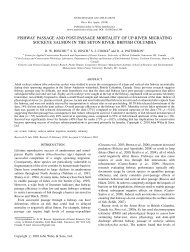Managing External Innovation: The Case of Platform Extensions
Managing External Innovation: The Case of Platform Extensions
Managing External Innovation: The Case of Platform Extensions
Create successful ePaper yourself
Turn your PDF publications into a flip-book with our unique Google optimized e-Paper software.
have at least three motivations to regulate connections among members and control the<br />
flow <strong>of</strong> ideas in the ecosystem. First, the platform owner wants to minimize issues<br />
associated with R&D cost, product complexity, risk mitigation, coordination problems.<br />
Second, the platform value lies in the ecosystem wrapped around it, therefore, the<br />
platform value increases if it has a high quality complements. Third, platform owners<br />
want to leverage external innovation to achieve a specific goal. <strong>The</strong>se motivations will<br />
reflect on the platform owner approach to regulate the relationships with external parties<br />
(Boudreau and Hagiu, 2009; West 2008).<br />
<strong>The</strong>re are different approaches when it comes to opening up the platform for<br />
development by external parties. A directed or close circle approach implies that the<br />
platform owner opens up specific areas to be developed by selected external parties. <strong>The</strong><br />
undirected or community approach implies that the entire platform is made available for<br />
external parties to contribute and the platform owner has nothing to do with selecting<br />
what part <strong>of</strong> the platform to develop or what functionality to build. <strong>The</strong> last approach is to<br />
have multiple tiers <strong>of</strong> internal and external developers (Bosch, 2009).<br />
2.2.3 <strong>Platform</strong> architecture<br />
<strong>The</strong> platform architecture describes the structure <strong>of</strong> the platform components, their<br />
interrelationships, and the principles and guidelines used to extend the platform. <strong>The</strong><br />
platform architecture has an important role in leveraging external innovation, reduce the<br />
investment and efforts for R&D, and accelerate the innovation in the platform ecosystem<br />
(Hagel III et al., 2008). Also the platform architecture affects the community<br />
participation as suggested by West and O’Mahony (2008).<br />
14
















